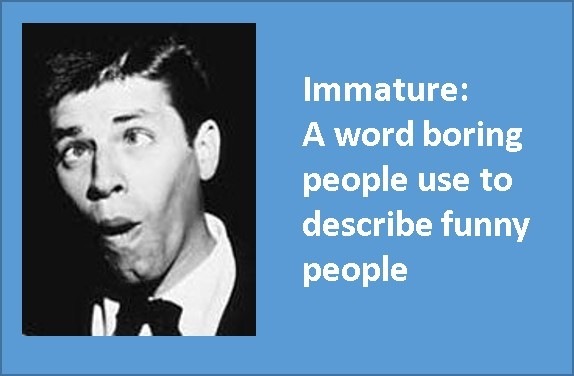Leadership: Thinking about Thinking

I facilitate a lot of groups. There is one mistake I seem to make over and over again. When it is time to break people into small groups, I ask participants to count off by the number of people I expect in the group rather than by the number of groups that I expect. For example, I say to a group of 15, “Count off by 5s.” when I expect there to be 3 groups of 5. What I get is 5 groups of 3. It is a dumb mistake that often has my co-facilitator whistling the theme song of Ray Bolger, the Scarecrow in the Wizard of Oz, “If I only had a brain.”
This is the kind of mistake that comes from my brain being on autopilot. It happens to us all, like when we walk into a room and suddenly can’t remember why we wanted to go in there.
Daniel Kahneman, in his book, Thinking Fast and Thinking Slow, describes two thinking processes, automatic processing, what he calls System 1 and focused conscious thought, what he calls System 2. Ninety percent of our brain activity is done by System 1, automatic processing, Ten percent is done by System 2. It is a good thing that this is true. Imagine having to drive to work with the same brain activity that you engaged in on the day you first learned to drive a car: “OK, now ease off on the clutch, give it a little gas, not too much, watch out for that car on your left, give the bicycle a little more room, you’re coming up to a stop sign start slowing down.
Our conscious brains are very powerful. When we focus we can do calculations, evaluations solve problems, plan and execute plans, but our conscious brains can only do one thing at a time. So we switch into as quickly as we can, or brain goes on auto pilot.
Our autopilot brain still makes decisions and directs our actions; it just does so based upon the frequency with which it has made a particular decision in the past. “Alan, when you break people into small groups count off by the number of people in the group.” “Go into that room now, Go back to thinking about . . . – Oh. . . Hmm . . . why did I come in here? . . .”
Our automatic processing brains are also very susceptible to suggestion. What our unconscious brains see is often what we expect to see. “That light was green, officer.” This selective perception can cause us to see things that aren’t there or to not see things that are there based upon our expectations.
In my work with leaders in the chemical, oil and gas industries, I have spent a lot of time thinking about “brain failures.” It turns out that a substantial percentage of Process Safety Incidents come from people’s “brains on autopilot” or “expectation-based inspection.”
However, I have come to believe that all leaders need to get control of our thinking. We need to be certain that we are using our conscious brains to focus on what’s important and to run periodic checks on our automatic processing brains.
The need for this is getting worse. There is considerable research to show that the amount of information available to us is increasing exponentially. Some of this is driven by technology, email, smartphones, social media, internet ubiquity; some of this is driven by the lionizing of Multi-tasking.” I often see “ability to multi-task” as a specific requirement on entry-level management job descriptions. What that says to me is “we know were giving you too much to do; we just expect that you can do a bunch of things at the same time.”
Let me be clear - there are people who can multitask - about 2% of the population - air traffic controllers are selected for this ability. However, for the other 98% of us, Multi-tasking is a myth. What we are doing is rapidly switching between our conscious brain and our automatic processing brain, switch-tasking. Switch-tasking has been shown to degrade overall productivity, decrease working memory, and the ability to focus.
So the first act of the leader is to get control of your thought processes. Create space where you can use your working memory effectively. Do emails at 10:00 and 2:00. Quit saying “my door is always open.” Maintain your accessibility to your people, but occasionally, close your door, find time to think about how you think.
Self-awareness is the foundation of leadership. How could we expect others to follow unless we have some idea of how we ourselves think, behave, and come across to others? It all starts with thinking.
Carl Gustav Jung, the Swiss psychologist, posited two brain primary functions, Perceiving - the way we take in information, and Deciding - the way we draw conclusions from that information and prescribe action. He further broke each of these functions down into preferences, two ways that most people prefer to take in information or decide and act.
Do you prefer to take in information in an ordered, organized, step-by-step way or are you more comfortable skipping around and “reading between the lines.” There is no right or wrong here, just differences between people.
Do you prefer to decide things by weighing pros and cons, making spreadsheets or balance sheets or do you most often decide things by comparing expected outcomes to deeply held values often about people. Again, there is no right or wrong and these are preferences not absolute irrevocable personality traits. It’s like left-handedness. Some of have stronger preferences for our hand preference than others, but left-handed people often become more ambidextrous, because they live in a right-handed world.
By now many readers will be saying –“oh he’s going to push the Myers-Briggs Type Indicator.” The MBTI is an instrument that measures Jungian brain function preferences together with and understanding of external orientation (gravitate towards people and things) or internal orientation (towards concepts and ideas.) MBTI has become quite popular in American corporations. I do like the MBTI as a way to understand differences between people, but I think it is misused to select people for jobs or compose teams. It is much better used to understand one’s self or as the basis of discussion between people trying to understand each other.
There are many other models for the way people think that I like as well, David Kolb’s Learning Style Inventory, Ned Hermann’s Whole Brain Model, Stuart Atkins’ LIFO, The Gallup Strengths Finder, to name a few. I am agnostic as to the analytical model leaders use to think about their own thinking. I do recommend that a leader spends some time understanding how he or she naturally thinks and tries to expand his or her thinking flexibility, to become more mentally ambidextrous. For example, push the limits about how you think about strategy, use the industrialist Michael Porter and the value engineering approach of Chan Kim and Renée Mauborgne’s. Blue Ocean Strategy.
A client, Fred, once said to me, “I like having you around because you think of things that would never occur to me. You see the impact of my decisions or actions long before they happen.” I still think it is one of the nicest compliments I have every received. I think Fred was valuing my intuition and perhaps my Emotional Intelligence (to quote Daniel Goleman.) But what he was really saying was: “You think weird!”
I think it extremely useful for a leader to surround herself with others who “think weird.” Recognize your own thinking patterns and the limits of your attempts at cognitive flexibility and hire people who fill out your flat sides. The drive for diversity in organizations is not just to create a fairer workplace. It is also to create a more complete thinking style, a collection of people who can think about an issue from many different perspectives in order to produce better decisions and more sustainable results.
There is one place where thinking flexibility doesn’t work in the thinking that goes into solving problems. Problem solving requires two different kinds of thinking:
Divergent thinking
Where the objective is the quantity of ideas, and
You suspend all judgement, and
Use tools like brainstorming and lateral thinking.
Convergent thinking
Where the objective is the best idea
You, group and combine ideas, evaluate ideas, and plan execution of ideas, and
Use tools like affinity diagrams, prioritization criteria matrix, and critical path method.
Leaders must insist that these two types of thinking be kept separate in solving problems, generating innovation, and improving processes. Just as “That’s a dumb idea” poisons idea generation, “Here’s another thought” derails idea selection and planning.
Thinking about our own thinking involves introspection, strives for flexibility, either within ourselves or within our team, and involves the discipline to focus on the right type of thinking at the right time.
It isn’t intended to turn us into the “smartest guys in the room,” (that’s what the guys at Enron used to say, and that didn’t work out too well.) But rather to recognize that “none of us is as smart as all of us.” And to give us the kind of confidence the scarecrow felt when the Wizard of Oz gave him a diploma:
“The square root of the hypotenuse of an isosceles right triangle is equal to the sum of the square roots of the other two sides. Oh Joy! Oh Rapture! I’ve got a brain.”
Yes, I do. And it is mine to expand and to use. Now break into 3 small groups, in whatever way you choose.
"Articles from Alan Culler
View blog
The late, great Jerry Lewis as a young comedian · “You are only young once, Alan, but you can be imm ...

The late Keye Luke as blind Master Po in the 1970s ABC-TV series "Kung Fu" · A Master Black Belt is ...

A fun and fascinating read on early psychedelic research · “My book about Tim is up on Amazon. I hop ...
Related professionals
You may be interested in these jobs
-

Food Service Tech, Nutrition Services, Part-Time, Various
Found in: Lensa US P 2 C2 - 3 days ago
Mercy Cape Girardeau, United States Part timeWe're a Little DifferentOur mission is clear. We bring to life a healing ministry through our compassionate care and exceptional service. At Mercy, we believe in careers that match the unique gifts of unique individuals - careers that not only make the most of your skills and tal ...
-

Material Handler
Found in: Lensa US 4 C2 - 14 hours ago
AtWork Group Sacramento, United StatesWe are hiring a Material handler for our growing companyMonday - FridayRequirements:Warehouse experienceMaterial handler experiencePicking/packing/pullingSorting/labelingShipping and receivingInventory/ Cycle countsRF ScannerForklift experienceStrong ERP/Computer skillsDomestic a ...
-
Admissions Representative
Found in: Lensa US 4 C2 - 14 hours ago
Goodwill Industries International Inc Phoenix, United States3130 E Thomas Rd Phoenix Arizona, 85016, · Position Description: · Initial point of contact for individuals looking to attend The Excel Center in Arizona. Inspires and delivers advisement, supports and assists all prospective students to understand the education resources offer ...


Comments
Alan Culler
6 years ago #3
Thanks Joel Anderson I appreciate your support
Alan Culler
6 years ago #2
@Alanea Kowalski Thanks for your comments I'll look into the Predictive Index
Joel Anderson
6 years ago #1